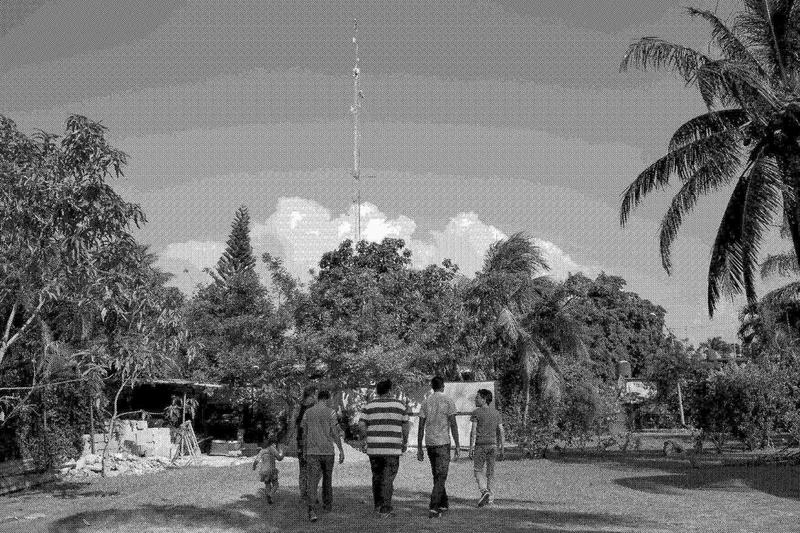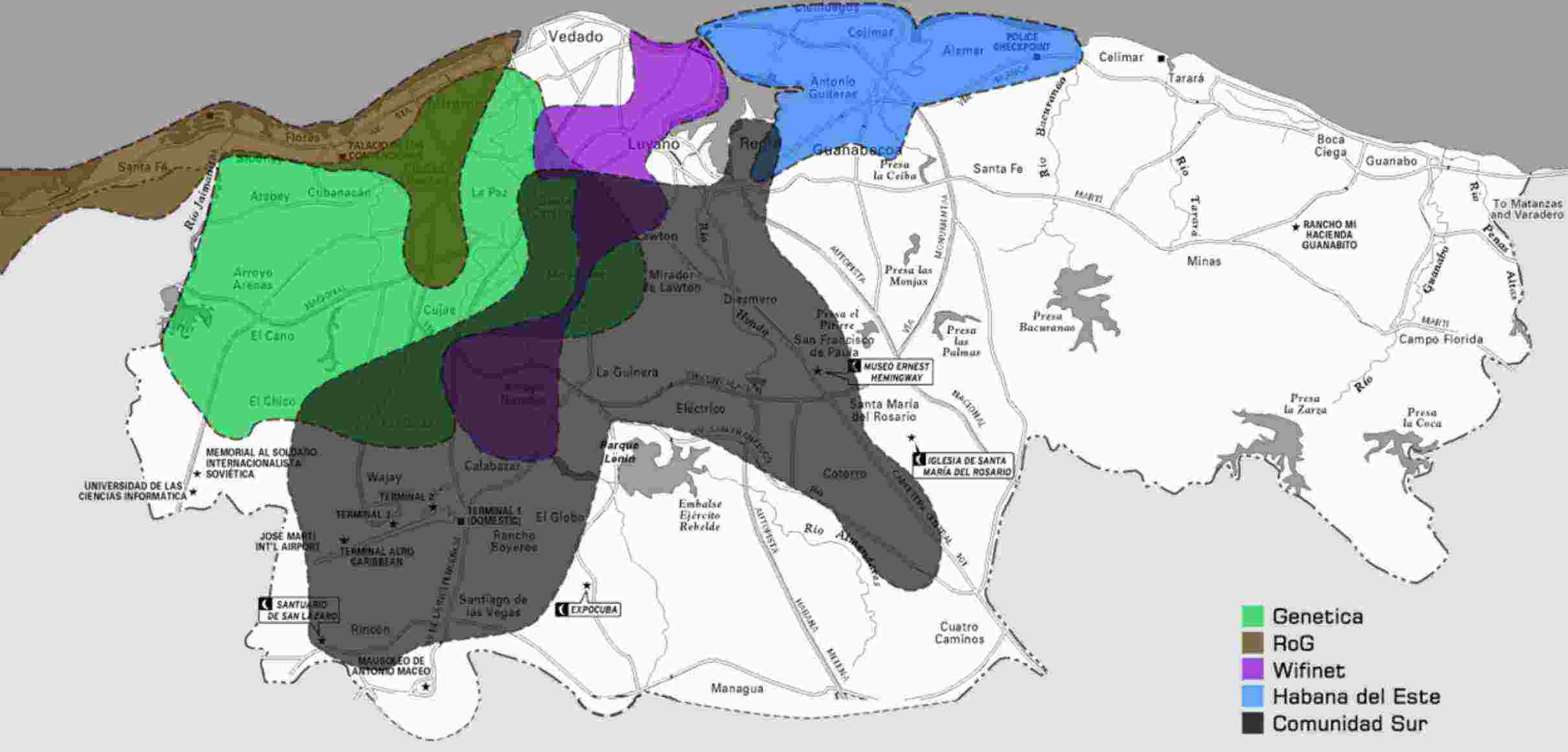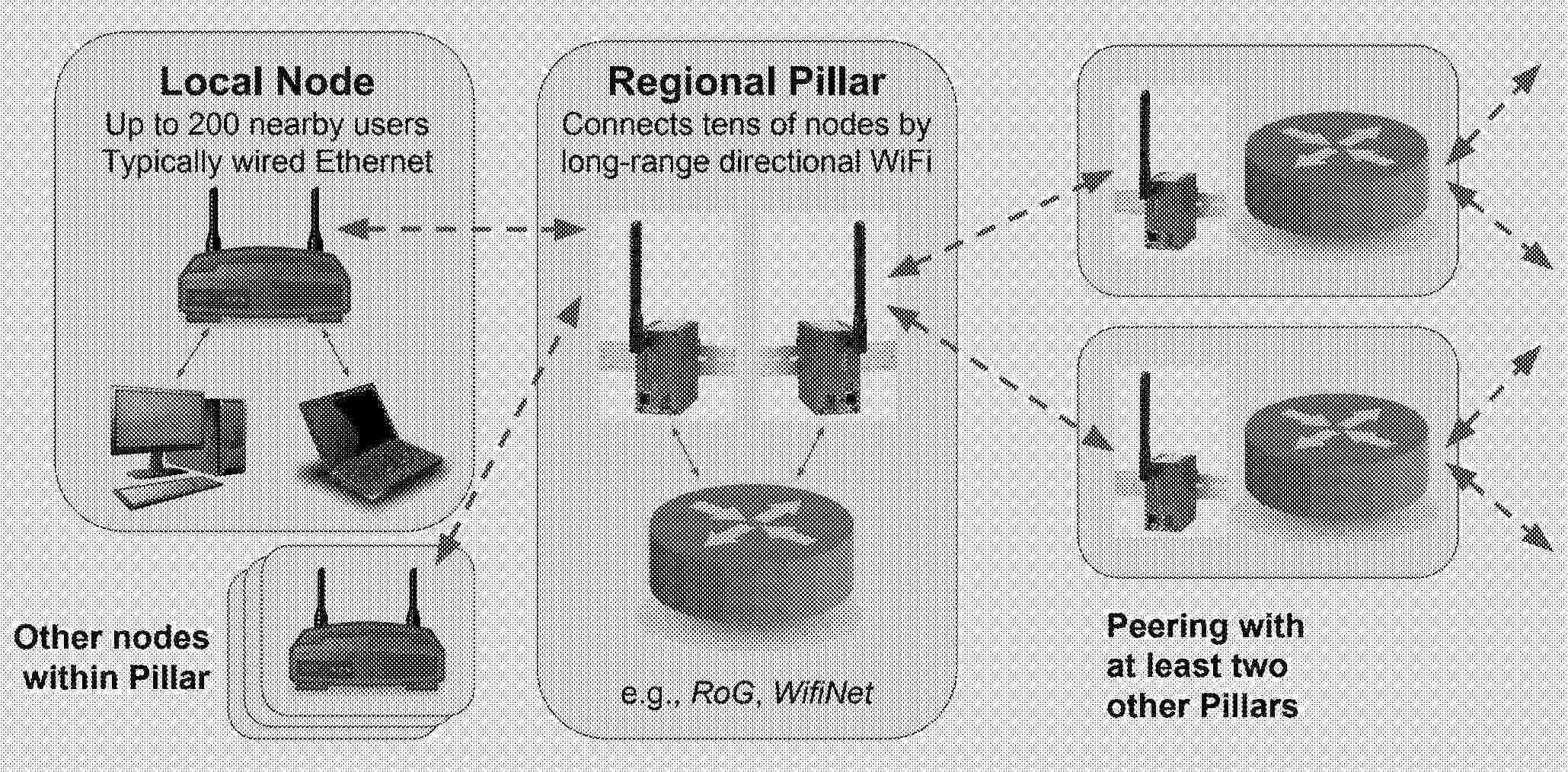Mesh Networks are the People's Internet in Cuba
Posted

I’ve often heard about how Cuba has an Internet access that’s slow, costly, and strictly censored. And while it seems to be true that it’s slow and costly, it doesn’t seem to be censured in the strict sense. But every connection you make to the network is strongly tied to your identity. You could argue that it’s kind of the same in much of Europe in that regard. Connection to the Internet has also been difficult because of the embargo imposed by the US.
But, in the past few days, I’ve started to learn about another network, much easier to access, faster, nearly free ( I’ll come back to it ), and doesn’t seem to have censorship in place. Best of all ? It’s run as a mesh, operated by volunteers in La Havana. Similar but smaller networks are said to exist in other Cuban cities and provinces. Meet SNET, for Street Net.
It all started with a toot by @peron@mastodon.sdf.org talking about the software that hackers in Cuba are putting together. I started to read about their stories, and got interested in how they get access to software, share it and build it together. I heard about a homegrown DIY Internet, and went down the rabbit hole. Here’s the story of a diverse people, fed up by the former way of connecting, deciding to build their own network.
Hacking scene
A little word on what we are talking about, when we speak about Cuba’s hacking scene. As you may know, Cuba has had a rough existence because of the colonization by foreign countries, namely the USA. During the “Special Period”, Cubans where forced to make do with what was at hand, and in nearly every aspect of life. When you think about Cuba, you might think of the old american cars, shining in the sun as if they just came out of a factory. Well, in some way, they did, and they are the most visible evidence of the hacking power cuban people have.

I say power, because it is knowledge, plus action. The knowledge comes from education ( 99%+ people know how to read in Cuba, and it has a very efficient education system ) and necessity. Action is simply necessary to live, as there are no repair contracts for equipement bought overseas. Now, all of this accumulated power has translated itself into what Ernesto Oroza calls Technological Disobedience.
So, Peron, as I will call them, told me about how it was in Cuba ;
“Their hackers form a thriving community, located in all their clubs and universities. They have lots of female hackers there too. They are very competent programmers. […] They use Linux, Debian, BSD but even OpenVMS (I learned that there). But those are the official clibs. As their main problem is the lack of internet connections and speed, they build inter-home hobbist citywide LANs. They play games and share contents. They like to be provided with pirated TV programs, serials, and cartoons for the kids, and they share them using the makeshift networks.
“They like to emulate everything on ARM Raspberry Pi and PC. The computer hacker girls teach that to the little kids! I was amazed as they write poems, a 10yo text adventures in spanish, all using the terminal editor on an emulated VMS using LSE (an EMACs like text editor). For the little girls it was noisy fun.”
“The little girls were told those were the computers the old folks used to have many years ago, but still you could simulate them on the tiny raspberry pi, and that is the computer their generation have. So they compare the size of a fridge (like a server) and the raspberry or a cellphone). And they girls asked if you could send love letters and poems with a VMS. So they proposed to do so. I was blasted.”
“The jovenclubs seemed to be a great of fun for them. Since I provided them with a HDD with cartoons, I was like a hero for them. At the time it was hard to get entertainment in Cuba, and you cannot watch youtube. But they can share the cartoons via the makeshift LAN. All the small towns become criss-crossed with UTP LAN cables. They share everything and play Linux games. TuxKart and 0AD were they favorites, and also some local developments. There was one similar to SIMS made in Cuba.”
You can have a glimpse of what Cubans are bulding at ..Github, sadly.
How it works
Born in 2001, The SNET has, in the past years, seen many evolutions. At first, it was mostly dumb switches connecting PCs to each other in a big LAN, but over several houses and neighborhood. A sort of Wide-Local Arena Network. Ethernet cables running from one house to another is not uncommon. And, as is the case when you run cables everywhere in the city without the cooperation of the municipality, it can get complicated. Cables are expensive to run, and in Cuba, where getting your hands on tech is a hassle, getting loads of CAT5e cable isn’t easy to start with. Regardless, that technique is still being used today.

Now, where it gets interesting, is with the addition of mesh networking via Wi-Fi. Some nodes have set up antennas to which small access point routers are connected. A lot more people have gained access thanks to the ease of connecting.
Technically, they seem to be using M2 and M5 NanoStations from Ubiquity, switches running under beds, glue, nails, plastics bag and old routers. Mostly what you would see everywhere else in the world, but imported at high cost. Building your Gaming PC also means building the network.

To this day, reports have indicated that there might be between 40 000 and 90 000 people using this network.
Youtube user Alden Padron claims to be the creator of the first node ;
You won’t believe me but the first node in Cuba was created by me :) with this antena https://en.wikipedia.org/wiki/Slotted_waveguide and an old Linksys router flashed with DD-WRT.
His account seems to be mostly gaming videos, so it might check out !
How it’s organized
The SNET is composed of Nodulas, interconnected to each other. Each Node has its admins, that are responsible for part of the network, be it moderation or administration.
The community as a whole has governance principles in place. It is completely free of charge, if you can afford it. Meaning that you need to provide your own gear. It does not provide Internet services or connection to the wider Internet, TV channels, pornography or anything else considered to be illegal, and you cannot use obscene language.
These rules seem to be in place as part of a informal deal with the Cuban government to avoid being repressed out of existence.
The SNET is used for many purposes, but one of them that comes back often is gaming! World of Warcraft, TuxKart or O A.D are games enjoyed by Cubans on SNET, because they allow for LAN gaming. The servers are run by the community, as can be seen in this video, called “Isabel and the SNET, the illegal internet network of Cuba”
It does offer more than just game, with a mirror of Wikipedia, VoIP servers, and social networks being hosted.
Even if, as said before, it’s not easy to get access to SNET because of the lack of equipment, it’s a tremendous feat to build such network ! Even the Associated Press is impressed
And, it doesn’t have some of the downfalls of bigger internet services, as Youtube user Ram said in 2019:
I’m Cuban (from a different city) and this is all true. I used to play WoW with homemade antenas and usb-wifi. It was really a great thing, because since the community on the servers is so small, you can actually get to meet them in person and have a lot of fun. So it had the benefits of gaming without all the social struggles it can bring. We also had a social-network called “the social” with no more than 100 active users, where, once again, you felt more safe and warm than when you use facebook.
Dr. Michaelanne Thomas Dye has made very detailled in-depth research on the Cuban SNET you can read for free in here paper, “If it Rains, Ask Grandma to Disconnect the Nano: Maintenance & Care in Havana’s StreetNet”, written by Michaelanne Dye with David Nemer, Neha Kumar & Amy Bruckman.
Governement repression and control
As of June 29th, 2019 , the government of Cuba has declared new regulations for networks aiming to regulate the 2.4Ghz and 5Ghz bands. Although it lifts some regulations on importing network equipment, which was happening regardless, it seems to be making SNET, that was tolerated until now, effectively illegal. It’s users protested, holding demonstrations and publishing a video online (youtube link), explaining their protest.
The team released this Saturday a statement in which it expresses its position on the new rules governing private data networks and high-speed systems. On the positive side, they appreciate that it is “optimizing the use of the radio spectrum and generating a legal framework” to connect to the wifi zones of the Cuban Telecommunications Company (Etecsa), in addition to allowing the importation of equipment that was so far banned. SNet administrators propose to the authorities the creation of “a special license” so that the network, as it exists today, can connect to Etecsa services and continue to benefit its users, they fear a closure of this initiative and the increased connection without its mediation. For those who do not have economic resources, connecting to the internet by paying 1 CUC the time of navigation in the official wifi zones or buying a data package for access from the mobile can in practice be disconnected.
Wikipedia states that “The negotiations have ended with a decision to transfer SNET’s services and content to ETECSA, Cuba’s government-monopoly ISP, and to provide access through Cuba’s nationwide chain of 611 Youth Computer Clubs (YCCs).”
As to the motivation of the government behind this closure, they are yet to be explained. The obvious explanation is cracking down on dissent and controlling information, as every state seeks to do, to reinforce it’s power. It might also be linked to the agreement with Google. Before installing monopolistic powers, allied to the state, you need to destroy any mean of resistance and self-determination. Keeping control over the network has been of upmost importance, also from a geopolitical point of view; let’s not forget about that time the US attacked Cuba using social networks and foreign aid.
On March 5, 2020, the Joven Club (a young people’s computer club affiliated to the Youth Communist Party), stated that:
The Youth Club in Pinar del Río facilitate the management of the radio spectrum and favor the process of computerization of Cuban society. Private network administrators can connect and receive services from this entity through wireless connections. - translated from here via https://translate.fedilab.app/
It seems that they are now tasked with running the SNET.
Around the world
Around the world, people are setting up mesh networks. In Detroit, for example, people are prevented from accessing high-speed Internet because of a lack of funding, infrastructure or suppliers. The poverty of some neighborhoods also means that people just can’t afford Internet.
And it’s in these moments, where traditionnal providers fail, that the successful establishment of a Internet mesh network happens, thanks to the great work of Detroit Digital Justice Coalition, and involvement of many in the community. This article is a great accounts of efforts happening around the USA, and talks in length about disaster recovery and the importance autonomous networks play in it.
In New York, the NYC.mesh project seems to be going great, setting up a mixed mesh topology, with omnidirectional antennas. They have a very impressive map you can look at to see how the network is organized. In Catalonia, the Guifi ISP connects 30 000 nodes ! And in France, a speaker at Battlemesh gave a great talk about how it’s going on..
The future might be meshed! :)
Read more
A few links I didn’t know where to put, but could be useful :
- https://conferences.sigcomm.org/imc/2017/slides/scott-186-slides.pdf
- https://www.nbcnews.com/news/latino/cuba-gamers-lament-what-they-see-end-island-s-underground-n1045846
- https://restofworld.org/2020/the-life-and-death-of-snet-havanas-alternative-internet/
- https://laredcubana.blogspot.com/2019/07/cubas-new-private-network-regulations.html
- https://laredcubana.blogspot.com/
- https://www.circleid.com/posts/20171110_data_on_cubas_snet_and_a_few_suggestions_for_etecsa/
- https://labs.rs/en/exploring-alternative-internets-and-unusual-forms-of-networking-in-havana/
- https://anarc.at/blog/2016-01-24-internet-in-cuba/
Thanks
Thanks goes to my parents for proofreading, as to dcht00 for helping me and providing links, and the members of the Fuz Hackerspace.